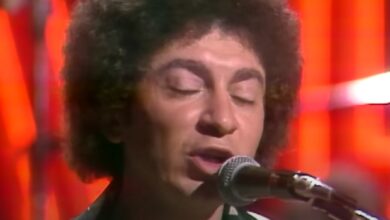The Animals’ “The House of the Rising Sun” Ushers in a New Era of Folk Rock in 1964
In 1964, The Animals released their iconic rendition of “The House of the Rising Sun,” a haunting ballad that redefined folk rock and established the band as a powerful voice of the British Invasion. With its dark, brooding narrative and unforgettable arrangement, the song reached number one in both the UK and the US, becoming one of the most recognizable tracks of the decade. Its success bridged the gap between traditional folk music and the raw energy of rock and roll, making it a landmark achievement in music history.
Formed in Newcastle upon Tyne in 1962, The Animals were known for their gritty, blues-influenced sound. Frontman Eric Burdon’s commanding vocals and Hilton Valentine’s distinctive guitar work gave the band its signature edge. Alongside bassist Chas Chandler, organist Alan Price, and drummer John Steel, the group brought an authenticity and emotional intensity that set them apart. While many British bands of the era embraced pop, The Animals channeled the spirit of American blues, bringing it to a new, wider audience.
“The House of the Rising Sun” was a traditional folk song, its origins dating back to the 18th century. Often described as a cautionary tale of misfortune in New Orleans, the song had been performed by countless artists over the years. Folk singers like Woody Guthrie and Lead Belly carried its legacy through acoustic renditions. However, it was The Animals’ electric, dramatic interpretation that transformed the song into a rock anthem.
The band recorded the track in a single take in 1964, capturing the raw emotion that defined their sound. Hilton Valentine’s arpeggiated guitar riff set a chilling tone from the outset, while Alan Price’s bold organ solo heightened the song’s intensity. Burdon’s soulful, anguished delivery brought the narrative to life, making listeners feel the weight of its tragic story. The decision to record it in one take was a testament to the band’s chemistry and their deep understanding of the song’s emotional core.
Upon its release, “The House of the Rising Sun” quickly climbed the charts. It reached number one on the UK Singles Chart in July 1964 and topped the US Billboard Hot 100 just months later. Its success was not only a triumph for The Animals but also a pivotal moment for the folk rock genre. At a time when rock music was dominated by upbeat, romantic themes, the song’s dark, introspective narrative stood out, resonating with listeners seeking more emotionally complex storytelling.
The song’s cultural impact was immediate and far-reaching. By merging traditional folk with electric instrumentation, The Animals paved the way for other artists to explore similar cross-genre experimentation. It inspired folk revivalists and rock musicians alike, contributing to the growing popularity of folk rock in the mid-60s. Artists such as Bob Dylan, who had previously performed acoustic renditions of the song, were influenced by The Animals’ electrified version, encouraging bolder experimentation within their own work.
For The Animals, the success of “The House of the Rising Sun” marked a turning point. The song’s international acclaim led to extensive tours across Europe and America, introducing them to new audiences. It also established Eric Burdon as one of rock’s most dynamic vocalists, known for his emotive storytelling and commanding stage presence. While the band would go on to produce other notable hits, none would reach the cultural heights of “The House of the Rising Sun.”
The influence of the track continued to grow over the decades, inspiring numerous cover versions. Artists ranging from Joan Baez to Dolly Parton put their own spin on the classic, each interpretation reflecting the song’s enduring emotional power. Yet it is The Animals’ version that remains the definitive recording, often cited as one of the greatest songs of all time. Its combination of emotional storytelling and innovative instrumentation has ensured its place in the pantheon of rock history.
In addition to its artistic legacy, the song’s success solidified the viability of folk rock as a mainstream genre. The emotional gravitas of “The House of the Rising Sun” demonstrated that popular music could tackle dark, challenging themes while still achieving commercial success. This opened the door for more complex, narrative-driven songwriting in rock, influencing countless artists and producers in the decades that followed.
Even within The Animals’ own career, the song had lasting ramifications. Its success heightened tensions within the band, particularly around the decision to credit Alan Price as the sole arranger. Despite this, the song remained a career-defining achievement for all members of the group, one that shaped their legacy and secured their place in the annals of music history.
Decades after its release, “The House of the Rising Sun” continues to enjoy frequent radio play and is often included in classic rock compilations. Its influence can be heard in countless subsequent works, and its story of misfortune and regret remains just as poignant today. The song’s presence in films, television shows, and commercials has ensured its continued relevance, introducing it to new generations of listeners.
Ultimately, The Animals’ version of “The House of the Rising Sun” is a testament to the transformative power of music. It proved that songs of sorrow and hardship could resonate just as deeply as those of joy and celebration. Through its electrifying sound and emotional depth, it remains a powerful reminder of the enduring impact of storytelling in music. As long as listeners seek songs that speak to the complexities of the human experience, “The House of the Rising Sun” will stand as a haunting and timeless classic.



